The construction of HMS Belfast, the third Type 26 City-class frigate for the Royal Navy, reached a key milestone this week as the ship’s aft block was successfully moved into the newly opened Janet Harvey Hall at BAE Systems’ Govan shipyard in Glasgow.
This marks the first time a Type 26 frigate will be fully consolidated under cover, allowing construction to proceed without interruption from weather and improving build efficiency. The bow section of HMS Belfast is expected to follow in the coming weeks. Once the full hull is in place, the ship will undergo further structural and outfitting work before being floated off and transferred along the Clyde to BAE’s Scotstoun yard for final testing and trials.
The Aft block of HMS Belfast, the third Type 26 City Class entered the Janet Harvey Hall earlier this week at BAE Systems’ shipyard in Govan. Footage courtesy of @BAES_Maritime. pic.twitter.com/okzLiXQ5J0
— UK Defence Journal (@UKDefJournal) July 3, 2025
In a statement, BAE Systems described the move as an important moment for the programme delivering the most advanced anti-submarine warfare capability to the Royal Navy.
The Type 26 programme is a major national undertaking involving more than 120 UK suppliers. Each ship is designed for a service life of at least 25 years and will remain in Royal Navy service into the 2060s. Capabilities include the Sea Ceptor air defence system, a five-inch medium calibre gun, Artisan 997 radar, advanced sonar systems and a vertical launch system able to house a variety of missile types.
The class is designed around flexibility and lethality in the undersea environment, but with broad utility for global operations. The ships are being constructed in blocks using advanced digital modelling techniques to increase precision and reduce risk during assembly.
The Type 26 design has also been selected by the governments of Australia and Canada, forming the basis of a multinational programme expected to produce 29 ships across the three nations.
Lessons learned from the UK build will be shared to improve efficiency across all programmes. Norway is also evaluating the platform for its next-generation frigate replacement.
The Janet Harvey Hall, named for a pioneering Clyde ship designer, represents a significant investment in the modernisation of UK shipbuilding and supports BAE Systems’ strategy to build faster, smarter and at greater scale. HMS Belfast is expected to be the first of many Type 26 ships to benefit from this covered assembly facility.


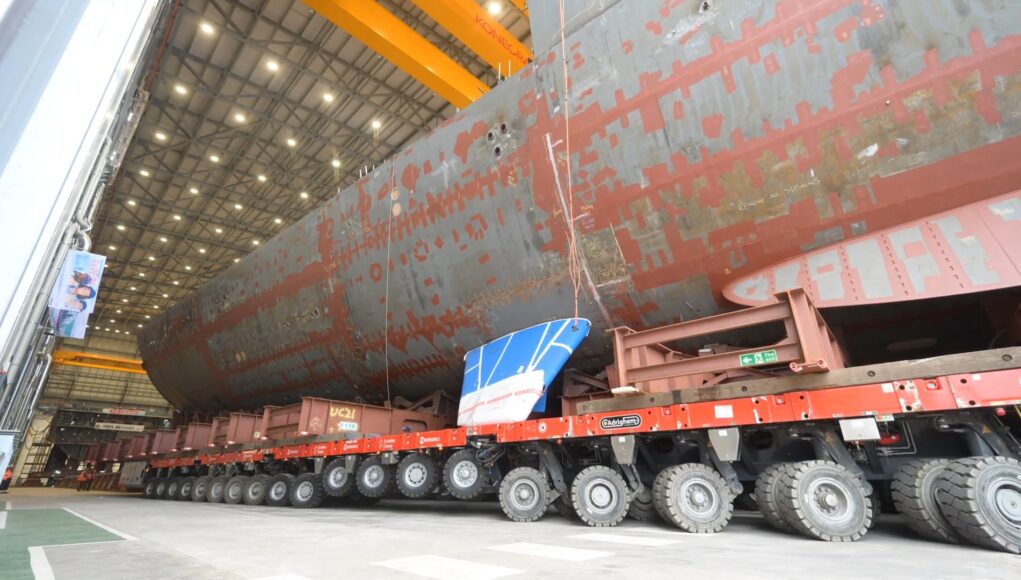
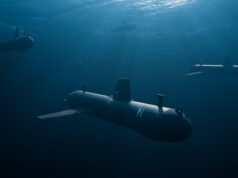
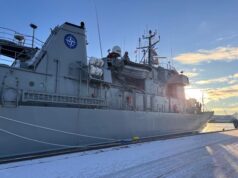



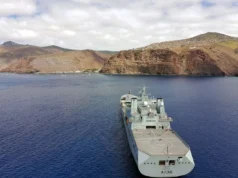
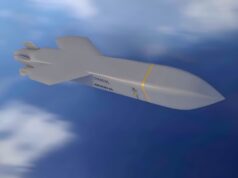
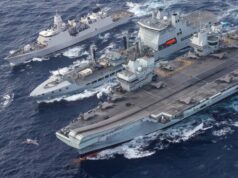
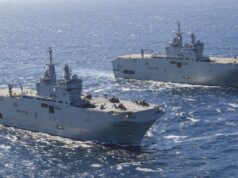


good to hear that large sections of the new ships are being rolled out on a regular basis now
Serious question relating to the second paragraph, last sentence. It says she will be taken to “Scotstoun yard for testing and trials”.
So do we take it she will be fully fitted under cover then ?
“I think not Laddie”.
Fantastic sight, things are certainly getting a move on now and just look at all that lovely “British Steel”.
I think you mean steel sourced in Britain from multiple origins.. sort of like Irish beef.. it’s beef and it’s in Ireland.. buts it’s travelled from many places to get there.
Sort of !
A lot of it was Swedish I think ? Still as you say like most things today they are made using foreign ingredients, hell, even a Cornish Pasty has “Swede”.
Aah but they are called turnips in Cornwall, only ‘Swedish’ turnips elsewhere.
Well, I guess “you know your onions”.
Good point is the steel in the construction of the shed British?
I read the British steel companies declined the tender to supply for these ships. So it had to come from abroad.
Was it due to the type of steel required ?
I think I read that “we” were not capable of producing the particular grade, so had to prchase elsewhere.
Are you feeling alright, Halfwit?
Your comments under this article seem almost, well, sensible?
I’m very well thankyou, living the dream, just finished a rather interesting domestic Solar Instalation for a particularly awkward customer, taking a few breaks to look in on here and join the serious crew.
Got to go, the Wife wants me to move a bloody panel as it obscures her view of the Sun.
Customers eh, what are they like ?
Isn’t British Steel still owned by the Chinese who bought it from the Indians after the Turks pulled out? I think a few months ago the government passed emergency legislation to allow them nationalise it, but did they ever actually buy it.
Yes, they got it for a steel but are still ironing out the problems, It takes a while to weld it all together.
There was already a section of Belfast in JHH, I assume that is the very end of the stern.
The hulls are starting to come together fast, I’m wondering if we will end up with a backlog of finished hulls waiting for fitting-out.
Serious question but when this HMS Belfast is commissioned won’t there be some confusion regarding the old veteran moored on the Thames? I remember when RFA Fort Grange had to change to Fort Rosalie to avoid confusion with RFA Fort George. I accept that the famous WW2 Cruiser is not commissioned but two vessels with the same name could be mixed up in some, less informed, circles?
Technically they renamed the one on the Thames as HMS Belfast 1938. So of course everyone will still call it HMS Belfast and context will be used to tell it apart from the Type 26. Unless The Imperial War Museum gets really ambitous and takes Belfast 1938 on tour, I suspect most people will cope. It’s still possible this latest HMS Belfast will be renamed HNoMS Grieg and we won’t have to worry about it. The Griegs came from the Clan MacGregor via an ancestor who left Scotland after Culloden, so I think it would be a nice name for a Scottish built ship bound for Norway.
Wow Jon you are a mine of information the bloody Scots get everywhere. 😱
I’d like to see HMS Belfast next to namesake in the Pool of London – great photo op.
You’ve been watching too much ‘Outlander’ laddie, I Ken!
How much quicker will being under the roof save ?
One hour.
When the clocks go forward.
Who knows, but having overhead cranes should make lifting large sections/components into place easier.
For jobs which need it to be dry quite a bit, no need to set up temp shelters and take them down again when the job is completed. Plus if they can increase their workforce building could carry on 24 hours per day.
Timing wise it will be really interesting to see how the first tranche of ships actually enter service.. because ship one will spend a lot more time than ship 2 in trials and ship 3 will have a lot of fitting out under cover.. we may very well see these three ships becoming operational within a very very short time of each other.. add in the T31s and the RN is going to have a roll coaster of a time between 2028-2030.
Yep 1-2-3 all around 2 year time gap between starting.
Vessel 2 build time was already around 5 months quicker and hopefully they can save another 6 ish month.
Sea trials will also be quicker but certainly the full operational capacity of ship 1 and 2 will pretty much be similar times within 6 months.
Hopefully ship 3 can be out within a year
We need more T26, if only we had the funding and the personnel.
Potentially, a world beating design.
Build ships and think people will come! Obv helps if there is clear above inflation pay rises but they did say each ship could have only 120 crew rather than the current 160 plan
Judging by the current popularity of the Labour Party and their innate ability to make the wrong choices like some sort of plutonium powered bad decision making magnet something tells me that this Council Leader in the near future is likely to fully enjoy the benefits of a life outside of politics.
We’re going to need to find a better way of selecting our politicians.
Oops I may have posted this to the wrong story.
Janet Harvey a ships designer???? Thought she was an electrician.
British Warship building brought into the 21st Century at last.